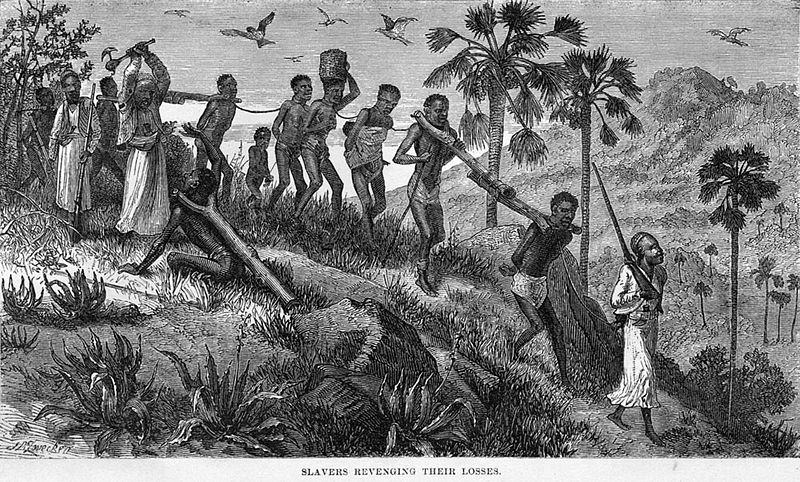Arkivo:Slaves ruvuma.jpg

Grandeso de ica previdado: 800 x 482 pixels. Altra qualeso, en pixel-i: 320 x 193 pixels | 640 x 385 pixels | 1 000 x 602 pixels.
Arkivo originala (1 000 × 602 pixel-i, grandeso dil arkivo: 286 KB, MIME type: image/jpeg)
Historio dil arkivo
Kliktez sur la dato/horo por vidar arkivo quale ol aparis ye ta tempo.
| Dato/Horo | Miniaturo | Dimensioni | Uzero | Komento | |
|---|---|---|---|---|---|
| aktuala | 02:36, 6 apr. 2013 |  | 1 000 × 602 (286 KB) | Underlying lk | larger file |
| 16:36, 14 mar. 2007 |  | 329 × 178 (23 KB) | Béka~commonswiki | {{Information |Description=Arab slave traders and their captives along the Ruvuma (Rovuma) river (in today's Tanzania and Mozambique) |Source=http://www.frontline.org.za/news/making_disciples_nations.htm; also in various non-Internet publications |Date=18 |
Ligilo al imajo
Ca pagini ligas al imajo:
Uzado en altra Wiki
La sequanta Wiki anke uzas ica arkivo:
- Uzado en af.wikipedia.org
- Uzado en ar.wikipedia.org
- Uzado en arz.wikipedia.org
- Uzado en ast.wikipedia.org
- Uzado en azb.wikipedia.org
- Uzado en be.wikipedia.org
- Uzado en bn.wikipedia.org
- Uzado en bs.wikipedia.org
- Uzado en ca.wikipedia.org
- Uzado en cs.wikipedia.org
- Uzado en de.wikipedia.org
- Uzado en diq.wikipedia.org
- Uzado en el.wikipedia.org
- Uzado en en.wikipedia.org
- Mozambique
- Slavery
- Death march
- Economic history of Africa
- History of slavery
- Slavery in Africa
- Thomas Jefferson and slavery
- 19th century
- Brussels Anti-Slavery Conference 1889–90
- Portal:Pan-Africanism/Selected history
- Portal:Pan-Africanism/Selected history/4
- Indian Ocean slave trade
- User:Caesarz870/sandbox3
- Medieval and early modern Africa
- Uzado en es.wikipedia.org
- Uzado en eu.wikipedia.org
- Uzado en fi.wikipedia.org
- Uzado en frr.wikipedia.org
- Uzado en fr.wikipedia.org
- Uzado en ga.wikipedia.org
- Uzado en gd.wikipedia.org
- Uzado en gl.wikipedia.org
- Uzado en ha.wikipedia.org
- Uzado en hy.wikipedia.org
Videz altra uzadi por ica artiklo.
